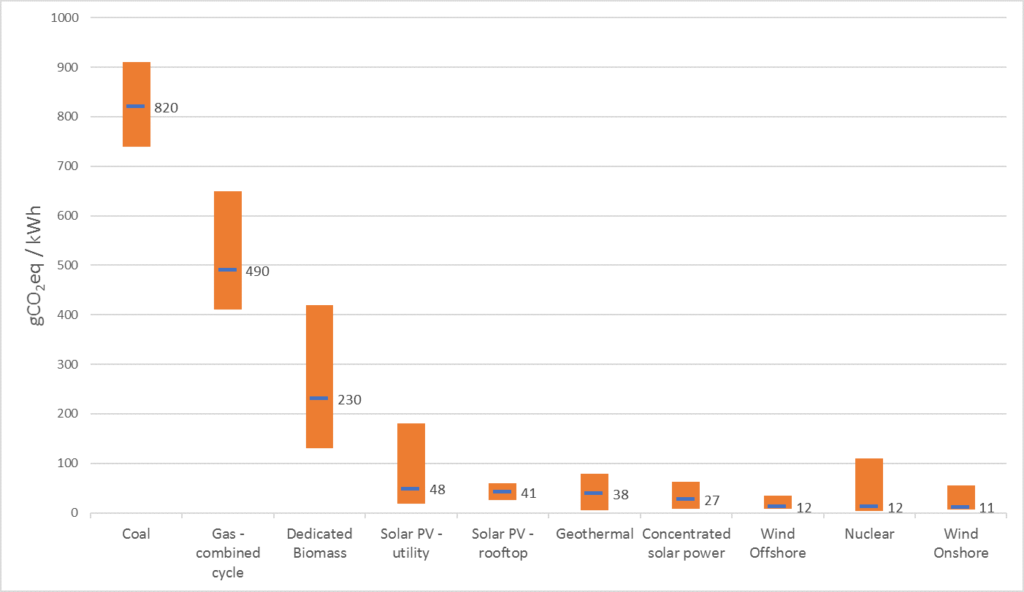At Orbital our focus is on delivering cost competitive electricity from tidal currents in an effort to provide the world with an entirely new source of low carbon energy. It’s really important that if we’re going to harness tidal energy, that we do so in such a way that minimises the carbon footprint around that so that we’re maximising the net overall reduction in carbon emissions from the grid mix. Equally; carbon emissions themselves can be seen as a proxy for costs – so there’s a parallel motivation for us to ensure the effective CO2 production per kWh across the life of one of our turbines is as low as possible.
All electricity generation technologies emit greenhouse gases at some point in their life cycle and hence have a carbon footprint. We’ve always known that the carbon footprint of our generating technology was likely to be low due to the relatively low material content, particularly fabricated steel, in our machines and our use of small, locally based workboats for installation and maintenance activities. Furthermore, our ‘floating’ tidal generators are highly efficient due to the position of the turbine blades close to the water surface where tidal currents are fastest. With the build of our first commercial demonstrator, the O2 2MW, underway, we thought it a great time to fully quantify the carbon emissions associated with our technology and understand ways we could reduce this in future.
With this in mind, and with support from Zero Waste Scotland, we employed world renowned engineering consultancies Xodus and Jacobs to produce an assessment of the carbon footprint of our O2 tidal turbine that is being installed in Orkney next year. The assessment considered all of the emissions associated with the entire project lifecycle – from manufacturing the tidal turbine to transporting to the site, including the installation, operation and decommission, including all vessel activities associated with these phases.
The assessment indicated that just 18 g / CO2e1 will be emitted from the project for every unit (kWh) of electricity generated providing appropriate recycling is carried out of components at the end of the project. This figure compares extremely favourably with a range of far more mature low carbon sectors such as onshore wind, offshore wind and solar.

Life cycle CO2 / kWh eq. range and median values (blue line) for various electricity supply technologies2
The assessment also concluded that while the project can run for 20 years, it can offset from the UK grid mix the carbon emitted by the project within just 1 year and 4 months of operation or 11 months if it is assumed that the electricity being generated is offsetting gas power generation, which is often the case in the UK.
Although we’re delighted with the results of this assessment, and that it quantifies just how positive our floating tidal energy generators can be in reducing carbon emissions – we are only really at the start of our technology optimisation process. So we’re looking forward to making further, significant reductions in the carbon footprint of our technology as we rollout the technology into tidal farms and optimise its performance.
Stayed tuned – the tides are definitely changing!
1 gCO2eq’ are grams of carbon dioxide equivalent. Carbon dioxide is the most significant Greenhouse gas (GHG) and is produced, for example, when fossil fuels are burnt. GHGs other than carbon dioxide, such as methane, are quantified as equivalent amounts of carbon dioxide. This is done by calculating their global warming potential relative to carbon dioxide over a specified timescale, usually 100 years.
2 IPCC Working Group III – Mitigation of Climate Change, Annex III: Technology – specific cost and performance parameters – Table A.III.2 (Emissions of selected electricity supply technologies (gCO 2eq/kWh)). IPCC. 2014. p. 1335.
James Murray, Programme Manager



